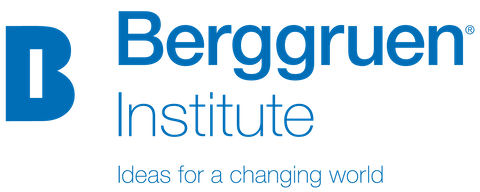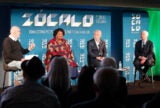
Illustration by Joycelyn Cabrera. From left to right: John Matsusaka, Shirley Weber, Nathan Gardels, and Mark Baldassare
Direct democracy is supposed to be a people’s process, allowing everyday citizens to enact their own ideas for laws or constitutional amendments. But does California’s system live up to that promise? Qualifying a measure for the ballot costs so many millions of dollars that only the richest people and interests can bring their proposals forward. Elected and appointed officials have considerable sway over the process, and routinely use it for their own aims. And voters have little information, and few opportunities to deliberate, as they make decisions about complicated proposals that, once approved, are very difficult to fix or change. How should recall and ballot initiatives change, and what reforms does the state seem likely to enact?
California Secretary of State Shirley Weber, Public Policy Institute of California president Mark Baldassare, and Initiative & Referendum Institute president John Matsusaka, author of Let the People Rule, visit Zócalo to explore what it would take to bring more democracy into California’s direct democracy.
Introduced by Pete Peterson, Dean, Pepperdine School of Public Policy
Zócalo invites our in-person audience to continue the conversation with our speakers and each other at a post-event reception with complimentary drinks.
The Takeaway
The Good, the Bad, and the Ugly of California’s Direct Democracy
Keep the Mail-In Ballots. Lose the Money and Special Interests. Give the People More Information
While majorities of Democrats, Republicans, and independents in California agree that the state’s system of direct democracy is a good thing, they also agree that it needs some fixing, especially …








